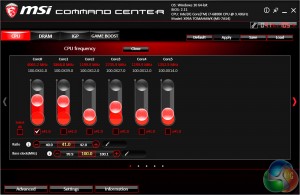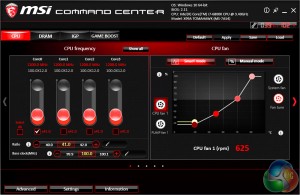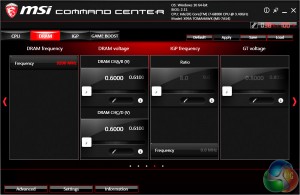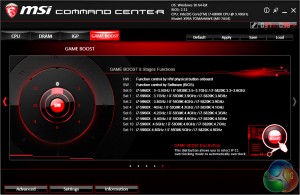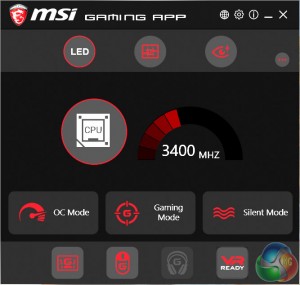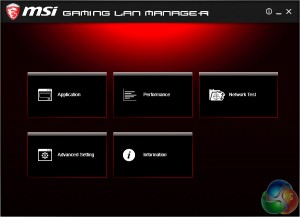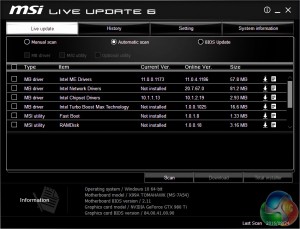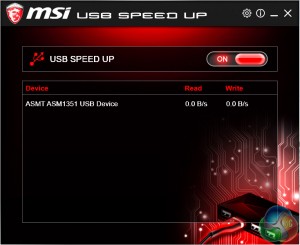While you don't have to use any software to properly make use of MSI's X99A Tomahawk, there are a range of software utilities offered that MSI hopes enriches the overall experience and functionality on offer.
The centrepiece is Command Center which allows you to overclock the CPU and DRAM and also has an automated overclocking utility in Game Boost (OC Genie under another name). The fan controls that are found within the UEFI can also be adjusted from within this software if you so desire.
Strangely the Game Boost function had no profiles listed for our i7 6800K or other Broadwell-E CPUs. We imagine MSI has yet to update this part of the software to account for this, nonetheless the i7 6800K is quite similar to the i7 5820K so you could still use these profiles interchangeably.
MSI's Gaming app hosts the RGB controls for the 4 pin RGB LED lighting port, though this doesn't work until a strip is actually connected and none are included by default. You'll also find some OC presets and other miscellaneous software functions in the Gaming App.
MSI Gaming LAN manager is MSI's packet prioritisation software for the onboard Intel LAN controllers. Every motherboard vendors seems to have one of these applications but the science is still out as to whether or not it actually makes any difference in PC Gaming.
Live Update 6 is arguably the second-most useful utility after Command Center and definitely worth an install if you're looking to keep your drivers and MSI-supported applications up to date. USB Speed Up is there to help with either UASP or BOT modes to speed up USB device transfer rates. In practice most USB devices and hardware controllers seem to exercise this function, in Windows 10 at least, without the need for any third party software above and beyond the correct drivers.
 KitGuru KitGuru.net – Tech News | Hardware News | Hardware Reviews | IOS | Mobile | Gaming | Graphics Cards
KitGuru KitGuru.net – Tech News | Hardware News | Hardware Reviews | IOS | Mobile | Gaming | Graphics Cards


